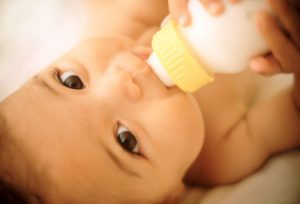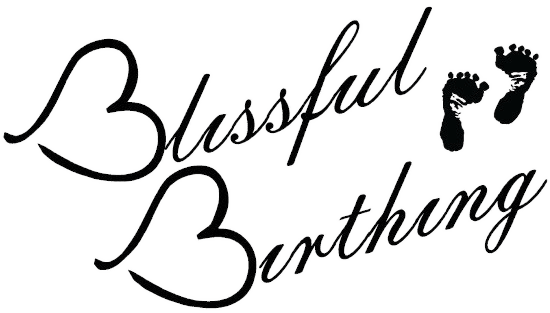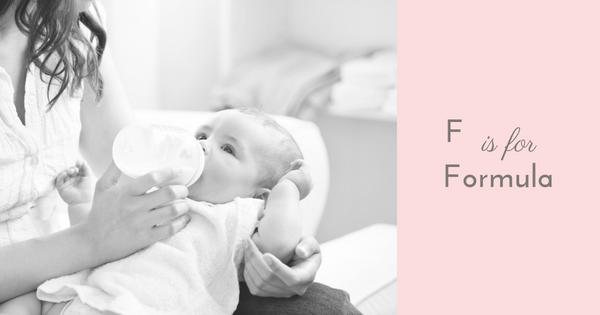How you feed your baby is a personal choice that, depending on circumstances, you may or may not have much control over. If your baby will be formula fed, whether exclusively or for supplementation, the options can be quite overwhelming! We want to take this opportunity to discuss what to consider when choosing a formula and a rough outline on formula preparation, storage, and use.
What to Consider When Choosing Formula
Every family is different in their needs and priorities. We have chosen the top four factors to consider when choosing your baby’s food. In no particular order, they are
Ingredients
Whether formula is your baby’s sole source of nutrition or given to supplement breastfeeding, we know the importance of a healthy diet. We also recognize that every family has different dietary preferences or requirements. As such, we recommend researching the ingredients in the formula options you are considering for your baby. Naturally if there are any specific dietary needs or concerns, your options will be more limited.
We compiled the ingredients lists for the most common formulas our clients use for their babies. You may have to scroll a bit when navigating the various links. The formulas with one star (*) indicate those which milk or milk products are the primary ingredient, and those with two stars (**) have corn syrup or corn products as their primary ingredient. The only one which does not have milk or corn syrup as its primary ingredient is Baby’s Only. The primary ingredient is organic brown rice syrup.
Enfamil
- Premium*
- Gentlease**
- Enspire*
- Nutramigen**
- PurAmino**
Similac
Availability
Another important factor to consider is how easy is it to obtain the formula you are choosing. With the European formulas (HiPP and Holle) you have to order them online, meaning you must plan ahead in ordering or always have an adequate supply on hand. The other formulas are more readily available and can be purchased at most grocery stores, convenience stores, or pharmacies. Only you can decide which will work best for you – if you’re a planner the European formulas may pose no issues for you whereas if you tend to leave things until the last minute you may want to consider an option that can be bought with little notice.
How To
It used to be believed that babies who were to be formula-fed should only receive ready-to-feed formula for the first month of life as it is sterile, but this is not the case. In a healthy, full-term newborn it is not necessary to use a ready-to-feed option. Premixed formulas are sterile until the package is open; at the time of opening the formula is exposed to the air and is no longer considered sterile. Single serving bottles used in conjunction with a sealed nipple are considered sterile, but larger multi-use bottles are not after the first use. These larger source bottles must be used within 24-48 hours of opening (the exact time frame will depend on the brand) and can lead to wasted formula if your baby is not consuming that volume. You cannot freeze ready-to-feed options.
Powdered options are not considered sterile (because there is no way to guarantee that the water you are mixing the formula with or the bottle you are mixing in are sterile). The WHO guidelines for formula preparation can be found here. They recommend sterilizing bottles before each use, disinfecting the surface on which the bottle will be prepared, mixing the powdered formula with boiled water and either immediately cooling and feeding the bottle or immediate storage in the refrigerator. Many pediatricians feel that these steps are not necessary in a developed country with clean water (such as the United States). We suggest you have a discussion with your baby’s pediatrician regarding formula preparation, weigh the risks and benefits, and make the decision that works best for your family.
Cost
Formula can be expensive, but it is important to keep in mind that this is your baby’s sole source of nutrition for at least the first six months of life, and the primary source of nutrition for the first year. When you look at it that way, your baby’s formula costs less than your food!
The major formula companies often have sales and coupons that can help bring down the cost. The following links take you to the corresponding programs to enroll.
How to Prepare Formula
Whether or not you decide to follow the WHO guidelines for bottle preparation, you should always start with clean, dry hands and a clean, dry work space. Add water to the bottle first. Use a measuring cup if you are using a bottle with a plastic disposable liner (the measurements on those bottles are not very accurate). When possible, avoid warming water or prepared formula in a plastic bottle as the increased temperature can cause chemicals to leach out of the plastic.
Next you will add formula according to the manufacturer’s directions and shake until well-blended. When adding powdered formulas to water, most manufacturers call for a level, unpacked scoop. What this means is you will scoop the powder with the empty scoop and use a flat instrument (such as the back of a knife) to level off the scooper. Do not pack the scooper with powder as you would when measuring brown sugar. Doing so will result in a bottle that is more concentrated than prescribed.
Important
Formula dispensers do not guarantee the correct amount of formula has been added to the bottle. We do NOT recommend their use (such as the Baby Brezza). Repeatedly feeding your baby bottles that are too dilute can result in malnutrition. Over-concentrated bottles (higher formula:water ratio than prescribed) is also bad and can cause vomiting, upset stomach, constipation or diarrhea.
Never add anything to a bottle including, but not limited to: sugar, flavorings, or baby cereals. If you are mixing a bottle that will also contain breast milk, breast milk cannot take the place of water when preparing formula. Prepare the formula as you normally would and then add the breast milk.
If you have any questions about proper preparation, the manufacturers have hotlines you can call (which can be found on their website or on most containers).
Formula Storage
Store opened ready-to-feed formula in the refrigerator according to the instructions on the package (typically 24-48 hours). Keep opened containers of powdered formula in a cool, dry place (typically up to 30 days). Never store formula in the freezer.
For bottles that have been prepared the guidelines are generally the same for all manufacturers. We strongly recommend reading the label for the formula you have purchased and strictly following their prescribed guidelines. A prepared bottle is fine to sit at room temperature for up to two hours. Once your baby has drunk from the bottle it must be finished or discarded within one hour. The reason being after this time there is an increased likelihood of bacterial growth.
More blogs in this series
G is for Group B Strep
H is for Hyperemesis Gravidarum
I is for Induction
This blog is for informational purposes only. It should not take the place of a discussion with a physician. Always discuss dietary concerns with your baby’s pediatrician.
This blog post is not sponsored by any company and the information contained in it are the uninfluenced opinions and research of the author, Rebecca Tucci.

